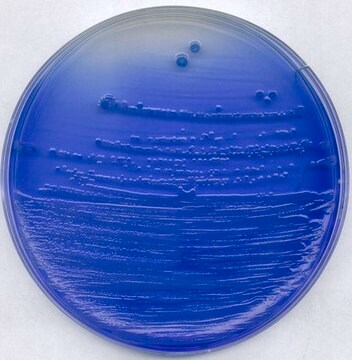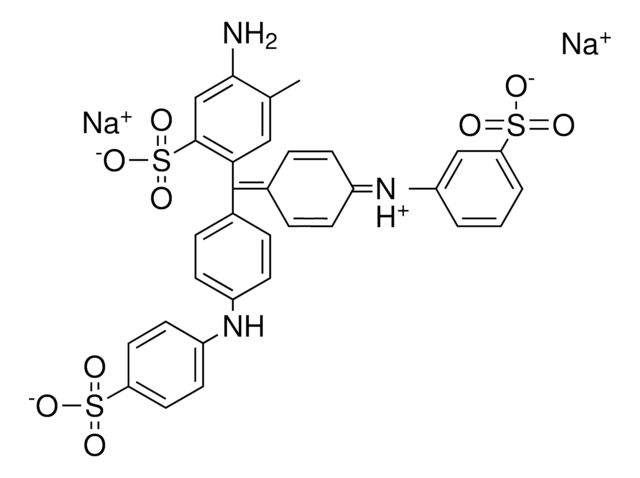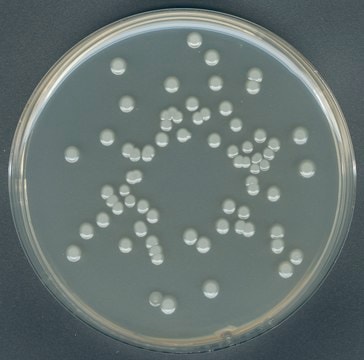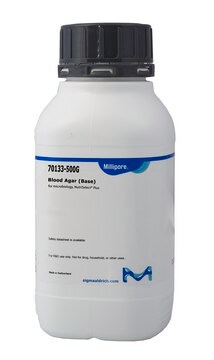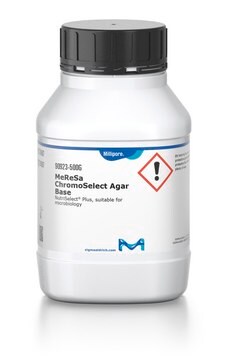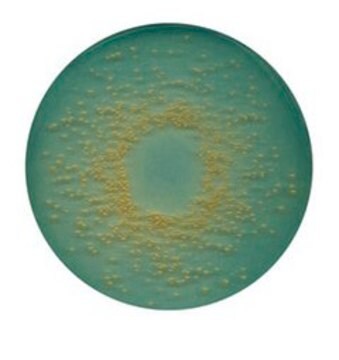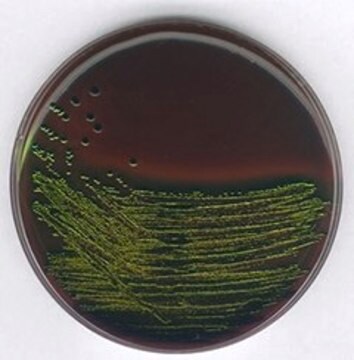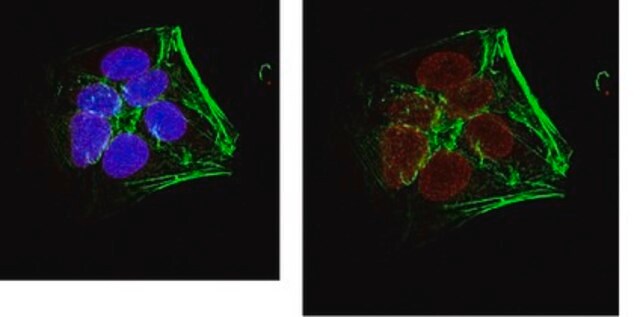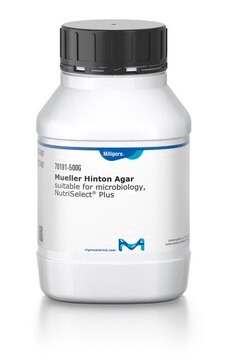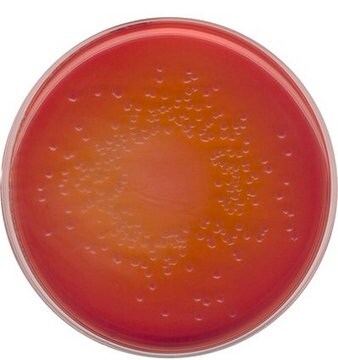22520
Chinablau-Lactose-Agar
suitable for microbiology, NutriSelect® Basic
About This Item
Empfohlene Produkte
Sterilität
non-sterile
Qualitätsniveau
Produktlinie
BioChemika
Form
powder
Haltbarkeit
limited shelf life, expiry date on the label
Zusammensetzung
agar, 12 g/L
casein peptone, 5 g/L
china blue, 0.375 g/L
lactose, 10 g/L
meat extract, 3 g/L
sodium chloride, 5 g/L
Hersteller/Markenname
NutriSelect® Basic
Methode(n)
microbe id | utilization test: suitable
microbiological culture: suitable
pH-Endwert
7.0±0.2 (25 °C)
Anwendung(en)
bioburden testing
environmental
food and beverages
water monitoring
microbiology
Eignung
nonselective and differential for Escherichia coli
nonselective and differential for Proteus spp.
nonselective and differential for Salmonella spp.
nonselective and differential for Staphylococcus spp.
nonselective and differential for coliforms
nonselective and differential for enterobacteriaceae
Allgemeine Beschreibung
Angaben zur Herstellung
Sonstige Hinweise
Fußnote
The designations basic, plus, or prime are added to indicate the quality control level, from basic quality control to standard QC plus to prime for full regulatory compliance.
Rechtliche Hinweise
Lagerklassenschlüssel
11 - Combustible Solids
WGK
WGK 3
Flammpunkt (°F)
Not applicable
Flammpunkt (°C)
Not applicable
Persönliche Schutzausrüstung
Eyeshields, Gloves, type N95 (US)
Hier finden Sie alle aktuellen Versionen:
Analysenzertifikate (COA)
Die passende Version wird nicht angezeigt?
Wenn Sie eine bestimmte Version benötigen, können Sie anhand der Lot- oder Chargennummer nach einem spezifischen Zertifikat suchen.
Besitzen Sie dieses Produkt bereits?
In der Dokumentenbibliothek finden Sie die Dokumentation zu den Produkten, die Sie kürzlich erworben haben.
Artikel
Microbiological assessment of bacteria found in spices, a potent source for food spoilage and pathogens.
Chromogenic media enable the selective detection of S. aureus, which produce bluish-green colonies that are clearly differentiated from other species.
Salmonella contamination is the second leading cause of food-borne illness worldwide. Controlling outbreaks of Salmonella is an important task for food regulators, restaurants and the food industry in general. The Salmonella family includes over 2,300 serotypes of bacteria, but two types, Salmonella enteritidis and Salmonella typhimurium, are responsible for about half of all human infections. Most outbreaks of Salmonella are traced back to dairy, poultry and meat products, but Salmonella can grow on nearly any food. Chicken, eggs and their derivative products are particularly high risk.
Unser Team von Wissenschaftlern verfügt über Erfahrung in allen Forschungsbereichen einschließlich Life Science, Materialwissenschaften, chemischer Synthese, Chromatographie, Analytik und vielen mehr..
Setzen Sie sich mit dem technischen Dienst in Verbindung.